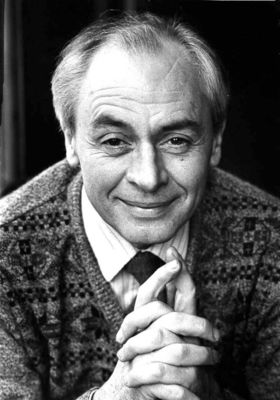Career
Mad to Be Normal: A Review of the New R.D. Laing Biopic
A new film highlights the life and work of the famed Scottish psychiatrist.
Posted November 6, 2017
This past weekend, I had the opportunity to see the new film about the life of the 1960s counterculture psychiatrist R.D. Laing titled Mad to be Normal, which showed at the Naples International Film Festival in Naples, Florida. Directed by Robert Mullan, the film follows Laing (portrayed by David Tennant) through his work with so-called schizophrenic patients in the 1960s, the turbulence of his personal and romantic life, and his struggles with fame and addiction. The film offers a refreshingly holistic view of Laing—emphasizing his revolutionary existentialist approach to human suffering while admitting his personal and moral shortcomings.

Laing is best known in the history of psychiatry for his work at Kingsley Hall in London between 1965 and 1970, and it is here that much of the movie takes place. Laing's residential program for patients diagnosed with schizophrenia emphasized a psychological understanding of the experience of psychosis without the use of neuroleptic medication. The living environment minimized the power differential between doctor and patient and maximized the autonomy and individuality of each patient. It was an experiment which was later replicated in modified form by the American psychiatrist Loren Mosher, who developed the Soteria program.
Laing (1967) saw psychosis as "a special strategy that a person invented in order to live in an unlivable situation" (p. 115). What is wrong in so-called schizophrenia is not "in the patient" but rather in his family and in society. Insanity, Laing insisted, is an understandable and rational adjustment to an insane world.
A particularly powerful scene in the film is Laing's visit to an American psychiatric hospital as a guest and his interview of a so-called mute schizophrenic patient. He enters her secluded, padded room, removes his shoes, sits on the floor, and introduces himself, "I'm Dr. Laing, you can call me Ronnie." He then proceeds to offer her a cigarette and then to buy her pizza. When asked what topping she would like, she breaks from her mutism and responds, "pepperoni." Laing's approach contrasts sharply with the authoritarian, white coat-wearing asylum keepers at the hospital, intent on diagnosing, drugging, and shocking.
For all that Laing did to advance the humane treatment of persons described as mentally ill, he also tended to romanticize schizophrenia, negate the suffering associated with it, and downplay the game-theoretical aspects of psychiatric disorder. He also tended to be philosophically inconsistent: he disagreed with medication treatment of "mental illness" but advocated LSD. He also opposed coercion but resorted to neuroleptics to manage an unruly psychotic patient at Kingsley Hall. These incidences, as well as Laing's struggles with alcohol, are highlighted in the film.
Mad to be Normal delivers a powerful and encompassing depiction of R.D. Laing the person and the psychiatrist. It is highly recommended to those who take an interest in schizophrenia, psychotherapy, the 1960s counterculture movement, and the history of psychiatry.
References
Laing, R.D. (1967). The politics of experience. London: Penguin Books.


